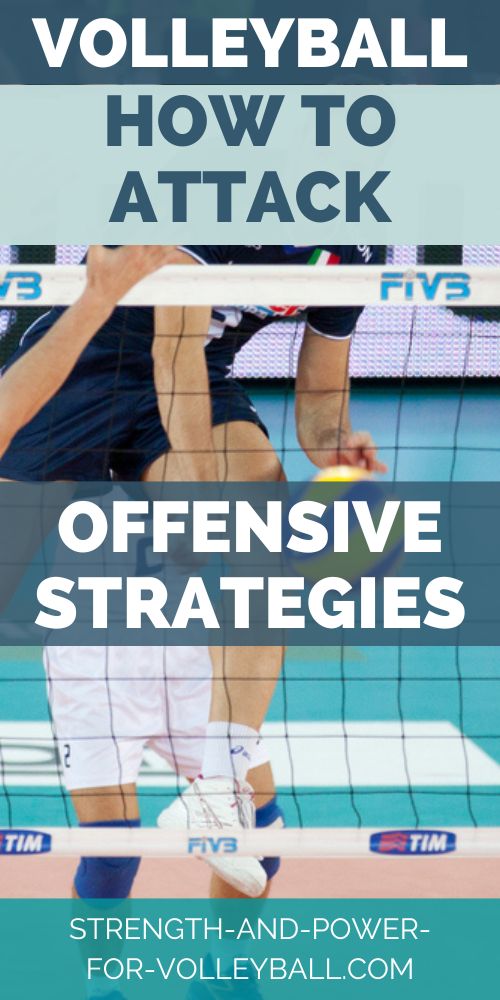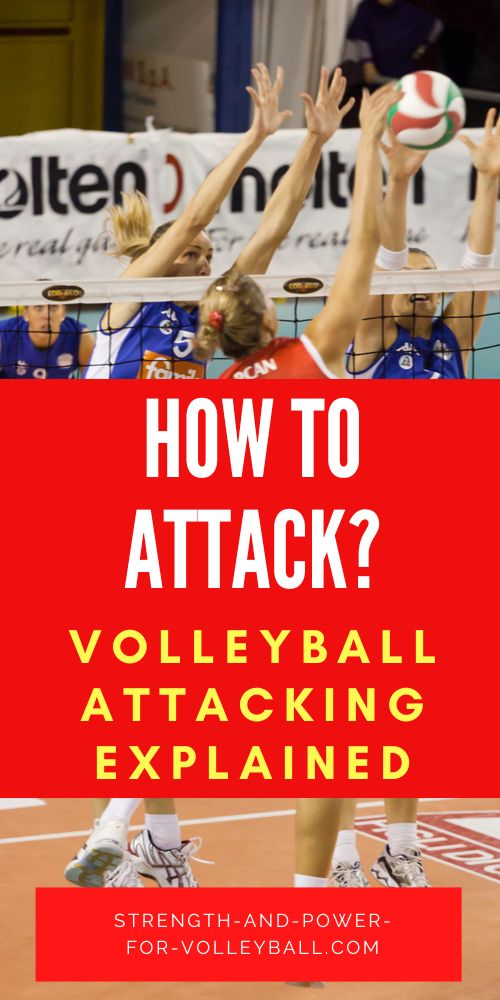How to Attack in Volleyball
Tips for Attacking the Opponent
How to attack in volleyball. To be successful, your volleyball team needs to learn how to attack. Here are 5 tips for attacking in volleyball.
Spiking Mechanics
The first thing your team needs to do is learn the correct mechanics for spiking a volleyball.
- Ball Contact. Learn the technique for contacting the ball correctly on your hand. In order to place the ball and control the ball, you need to know how to contact the ball. A good hand contact will lead to successful attacks.
- Footwork to Spike. Learn the correct footwork for spiking. To be successful at spiking, you need to get in position. You can't get in position if you can't get to the ball. The correct footwork allows you to get in position faster and more efficiently. With good footwork, you will be able to adjust your approach and get into a good position to spike.
Attacking Strategies
Winning in volleyball involves different strategies for attacking. There are different ways to attack in volleyball. Here are few attacking strategies you can focus on that will help your team be more successful.
- The serve. Many people don't think of the serve as an attack. Serving is attacking. Serving tough is a great way to attack your opponent. You can score with a serve. The offense starts with a pass and if you can keep your opponent from passing the ball by serving a tough serve, this will give your team a great advantage. Serving is important because the serve is the one time you have complete control over executing a skill.
- Setter setting an attacker. The main strategy for attacking is having the setter set a front row attacker. Pass the ball to the net, the setter then sets the ball to a front row attacker. This is usually the best chance a team has at scoring. The setter can also set the ball to a back row player. The back row player then jumps to attack the ball by jumping from beyond the attack line.
- The setter attack. Teams often forget the setter can attack the ball. You can catch a team sleeping and not paying attention to the setter. Train the setter to attack the second ball. Especially when on the front row, the setter jumps and attacks the ball to different areas of the court. When the setter is on the back row, the setter can also attack when the ball is contacted below the top of the net.
- Attacking the first ball. You can legally spike the serve in the front court, but there are situations where a team can attack by spiking the first ball. This would be when the ball is overpassed and the ball is near the net. The player can jump at the net and spike the overpass. Another situation for attacking the first ball would be for when a player sees an open area and sets the ball to the open spot.
Offensive Strategies - How to Attack in Volleyball
The goal for serve receive is to pass the ball to the setter so the setter can set an attacker. A volleyball team will have strategies for running an offense. The end result a team wants is to end the play by successfully attacking the ball in such a way that prevents the opponent from returning the ball.
Here are some strategies for running an offense.
- Set a high ball to the outside hitter. If you have a good outside attacker, you can pass the ball to the net and have the setter focus on setting the ball to the outside hitter. Have the middle hitter come for a quick set, fake middle and set the ball to the outside.
- Set quicks to the middle. If you team has really good middle hitters, focus on passing really well so you can run a quick sets to the middle hitter. Also, if the setter is front row and your middle is good at hitting a slide, this would be a good time to run a slide attack.
- Run a fast offense. If your team is smaller and quicker, then focus on running a fast offense. Pass low and fast and have the setter set quick to the attackers. The faster the offense, the more difficult it is for the opponent to get in position to block.
Rules for Attacking - How to Attack in Volleyball
At times, it can be important to understand the definition of an attack.
An attack is any ball that is sent to the opponent. By definition, every third hit is an attack. If a ball is legally blocked, then the ball was by definition attacked before it was blocked.
It's important for the setter to know what an attack is because the setter is often near the net when they are back row. The setter will be chasing down balls that are passed tight to the net. When the setter is near the net and reaching higher than the net, there are chances for illegal back row blocks and illegal back row attacks.
It's also important for other players to know when the setter is back row in these situations. For example, if the ball is in the plane of the net and the setter is contacting the ball, all the blocker needs to do is make contact with the ball at the same time as the setter. This will create an illegal back row block on the setter.
The setter also needs to be aware when they are in a back row rotation and set the ball when in the front court. During a back row rotation, if the setter at the moment they set the ball, the ball is entirely higher than the top of the net, if they set the ball into the plane of the net and the blocker touches the ball, it's an illegal back row attack by the setter.
Also, it's important for the rest of the team to know the attacking rules and know where on the court the setter is. For example, the opponent should be aware of the setter being back row, because if the setter is back row, the setter isn't a threat to turn and spike the ball because this would be an illegal back row attack. In this situation, the opponent should ignore the setter and focus on the protentional attackers that could be set the ball.
If you enjoyed these tips on how to attack in volleyball and would like to keep them close to you at any time, just save this pin to your Pinterest Volleyball Training Board.

